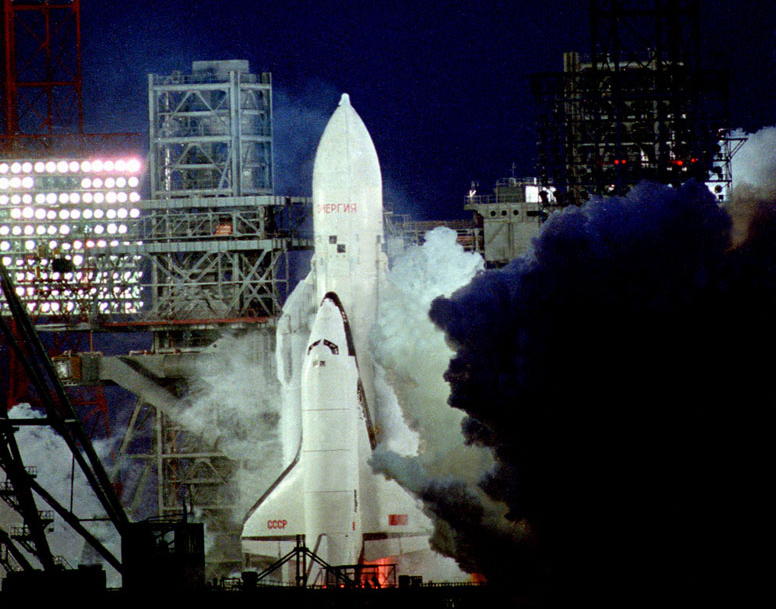My first detailed article on a flying machine developed for the Buran program is about the mighty rocket that was made to carry the orbiter – the Energija
In the mid 1970ies USSR was under pressure. Their moon program was canceled, the space race was lost and USA just had announced the next big thing – the Space Shuttle
The development of Russias Saturn V Contester – the N1 was stopped due to a quite bad record – 4 launches – 4 failures. In conclusion the whole space development in Russia was redesigned and a new design bureau was established – the NPO Energija. The history that led to this redesign are one of the main topics on my article Paving the road to Buran.
The main task for NPO Energija was to construct a N-1 Predecessor. The new rocket was supposed to be able to lift 120 tons into orbit and at least 40 tons into geostationary transfer orbit. Further on it was required to be configurable in different power modes.
The Engineers came up with a design that completely new and never seen before. A relatively short height of 59 meters, the main assembly’s diameter was almost 20 meters. a relatively new design was a two stage system, with the boosters being the first and the center being the second stage. With a fueld system weight of 2.400 tons it did not exactly meet the 40 ton GSO and 120 ton LEO requirement but a 22 / 96 count sounded quite impressive as well.

Whilst the United States designed their orbiters undercarriage specifically for the Shuttle, Energija was a own project with an intended use without Orbiter as well. The advantage of this design was firstly the boosters as they were using liquid fuels and normal engines unlike the STS with its once fired then unstoppable solid fuel boosters. Secondly the center unit was not only a tank but a full rocket stage, containing 4 engines producing a combined thrust of 23.600kn. This added to the booster thrust of 29.000Kn each made it one of the most powerful rockets ever built. The design of the stages also allowed to use both stages simultaneously in order to produce an unbelievable 139.600kn of thrust for heavy lifting into low earth orbit. Just to compare. The Airbus A380s combined maximum thrust is 1.244kn. Using this monster as a carrier for the orbiter resulted in no need for orbiter main engines and therefore increased the payload again.
After the catastrophic experience with the N-1 Rocket the Energija was very well designed and planned. That is the reason why it took quite some time to get to the first takeoff.
13 years after development began, on May 15th 1987 Energija took of from Baikonur Spaceport, transporting a military satellite to low earth orbit. The Polyus called satellite was firstly claimed as a dummy payload and later revealed to be an espionage satellite. While undoubted that the launch was a success, there are differences on the mission success. US Sources count the mission as a failure, Russian sources claim it being successful in terms of Energija system. As a matter of fact the satellite itself failed to deploy from its container and reentered atmosphere over the pacific ocean. This failure had nothing to do with the Energija system.
The second launch was done a year and a half later on November 15th 1988. Energija transported Buran 1k1 into low earth orbit. The spaceship circled the earth two times and then landed safely at Baikonur Spaceport. This Mission was not only the first one using close to maximum payload capacities, it also was the last Energija mission ever.

It is widely believed that 3 Energija Rockets have been built, the third one being destroyed at Baikonurs 2002 MIK Building collapse that also destroyed Buran 1k1. However this is not true. The Rocket destroyed only was a mockup for handling practice. Only two Energija rockets have been built. Though it is not sure how many parts do still exist. Russia kept on putting effort into reestablishing the program over and over again. The most recent try happened in April 2013 but was immediately denied by authorities